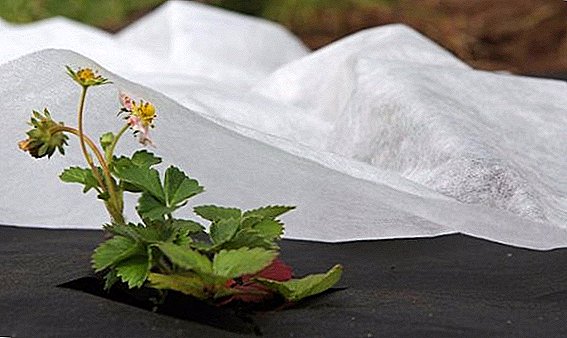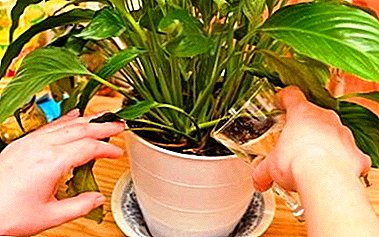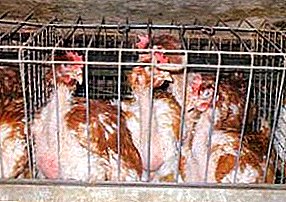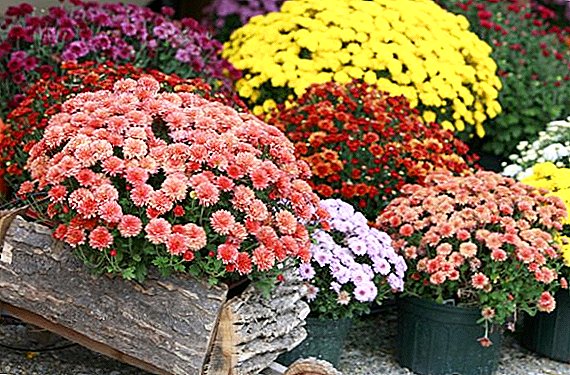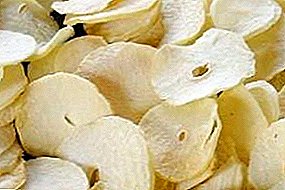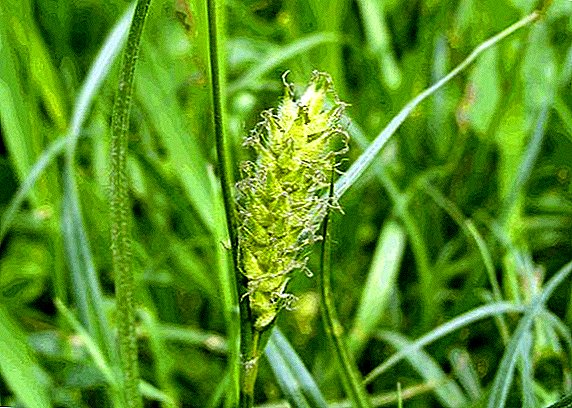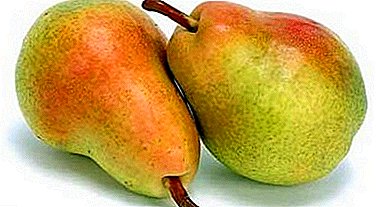 Ceps is perhaps the most desirable prey for many mushroom pickers. It can rightly be called the king of mushrooms, because it is characterized not only by its attractive appearance, but also by its very high taste qualities, which makes it an ideal ingredient for many dishes. Moreover, white fungus is characterized by a number of useful properties, which will be discussed below.
Ceps is perhaps the most desirable prey for many mushroom pickers. It can rightly be called the king of mushrooms, because it is characterized not only by its attractive appearance, but also by its very high taste qualities, which makes it an ideal ingredient for many dishes. Moreover, white fungus is characterized by a number of useful properties, which will be discussed below.
Boletus or porcini mushrooms, description
 White mushroom belongs to the edible varieties of mushrooms belonging to the Borovik genus. Its external parameters are largely influenced by growing conditions, but even in the worst case, it always remains a handsome giant, especially against the background of its other relatives. This tubular mushroom has a fleshy white leg, which can reach 10 cm in diameter and often grows up to 12-25 cm in height.
White mushroom belongs to the edible varieties of mushrooms belonging to the Borovik genus. Its external parameters are largely influenced by growing conditions, but even in the worst case, it always remains a handsome giant, especially against the background of its other relatives. This tubular mushroom has a fleshy white leg, which can reach 10 cm in diameter and often grows up to 12-25 cm in height.
The surface of the base (legs) is completely covered with a mesh pattern of a light shade, while the convex cap (its diameter is often 30 cm) is initially characterized by a pale yellow color, and a little later becomes chestnut brown. The upper part of the cap is smooth, and the lower one feels like a sponge with small pores.
The flesh of the white fungus is dense enough, and if it is cut or broken, the inner part of the fracture will remain white. Broken mushroom will have a pleasant mushroom smell.
Important! The boletus has an unpleasant "twin brother", called the gall mushroom. Their striking similarity is explained by the attitude to one family of the Boletovs. Gall fungus is unlikely to cause serious poisoning, but the taste of cooked dishes will definitely be spoiled, as it is very bitter.
 When collecting white mushrooms, it is also important to be able to distinguish the old from the young copy. First of all, you should pay attention to the caps and legs of the mushrooms found. In a young boletus, the leg will be swollen at the base, while in the old it is tall and semi-circular, with a greenish or reddish upper part.
When collecting white mushrooms, it is also important to be able to distinguish the old from the young copy. First of all, you should pay attention to the caps and legs of the mushrooms found. In a young boletus, the leg will be swollen at the base, while in the old it is tall and semi-circular, with a greenish or reddish upper part.As for the cap, in young mushrooms its lower part should be white in color, and in old mushrooms it should be yellowish-greenish. Nevertheless, we should not forget that the shade of the legs, like the color of the cap of boletus mushrooms, largely depends on the place of their growth.
For example, in spruce forests, the cap of the white fungus is initially pinkish, but with age it becomes pale red, which is not to be mentioned in the description. At the same time, birch planting makes the hat light brown, and oak groves give it a dark red color, often with a touch. By the way, boletus grown among oaks, is rightly considered the most fragrant and tasty.
Where do white mushrooms grow and when to pick them
Experienced mushroom pickers probably know exactly where to look for the cep, but if you are new to this business, then, first of all, you should understand that boletus mushrooms live in families in the forest. That is, as soon as you find one representative of the species, start looking for his relatives next to him.
 Among other characteristics of the white fungus, one cannot fail to draw attention to his dislike for thick dark groves. Therefore, in most cases borovikov hide in the grass on the outskirts of the forest, on the edges or among the young shoots of trees.
Among other characteristics of the white fungus, one cannot fail to draw attention to his dislike for thick dark groves. Therefore, in most cases borovikov hide in the grass on the outskirts of the forest, on the edges or among the young shoots of trees.
At the same time, sorting out which forest can grow white mushrooms, you should pay attention to adult or even old forests with lots of moss and lichen, although these mushrooms feel at least comfortable on sandy, sandy loamy soils and loamy soils.
Did you know? Borovik are widespread on all continents, and the only place where they do not grow is the territory of Australia.
In addition to determining the approximate location of the described mushrooms, it is worth knowing when the white fungus grows, because in some months it is simply useless to look for it. Thus, almost all boroviki appear in the forests in early July and can occur until the middle of autumn.
In the autumn period, when the first night frosts appear, under the rays of the morning sun one can find “crystal” white mushrooms covered with many ice floes. If the fungus is in such a state for a short time, then it is quite suitable for use, although rotten specimens are often found (due to the high water content and repeated freezing, they quickly deteriorate).
It is important to know, and how much the white fungus grows, as the younger representatives have higher taste properties. So, in the summer period the boletus reaches adulthood in 5-9 days, and in October this period will be increased to 9-15.
The composition of white mushrooms: calorie, nutritional value, vitamins and minerals
 Perhaps you know where the white fungus grows, but not all mushroom pickers are informed about the beneficial substances that make up it. In fact, boletus - just a storehouse of useful vitamins and minerals.
Perhaps you know where the white fungus grows, but not all mushroom pickers are informed about the beneficial substances that make up it. In fact, boletus - just a storehouse of useful vitamins and minerals.
Dry pulp contains 45% protein, 50% carbohydrates and 3.4% fat. In addition, per 100 g of these mushrooms accounted for 89.4 g of water, 2.3 g of dietary fiber, 0.9% ash.
Among the useful of vitamins (also per 100 g) it is necessary to isolate B1 (0.04 mg), B2 (0.3 mg), B3 (or PP - 5 mg), C (30 mg), E (0.63 mg). The group of macronutrients in this case includes potassium (470 mg), magnesium (15 mg), phosphorus (90 mg), sodium (6 mg) and calcium (25 mg).
Trace elements represented by iron (5.2 mg), manganese (0.23 mg), zinc (0.33 mg), fluorine (60 μg) and cobalt (6 μg). Also in this forest dweller are polysaccharides, sulfur, lecithin ester and a lot of β-glucan.
In total, per 100 g of white mushrooms, an average of 30 calories, and they have a lot of useful properties.
Useful properties of white mushrooms
It is not surprising that such an abundance of vitamins and beneficial macronutrients makes white mushroom a welcome guest in a basket of any mushroom picker, especially considering that rarely some of his relatives (it doesn't matter if they are white or different in color) can boast such characteristics.
 If we consider the white fungus from the point of view of its beneficial properties, then, first of all, it is worth mentioning the stimulation of the digestive processes of the body and the sense of saturation that it gives. Due to the large amount of protein, this product is often equated to meat, which, like the mushroom, is digested for quite a long time.
If we consider the white fungus from the point of view of its beneficial properties, then, first of all, it is worth mentioning the stimulation of the digestive processes of the body and the sense of saturation that it gives. Due to the large amount of protein, this product is often equated to meat, which, like the mushroom, is digested for quite a long time.
In addition, sulfur and polysaccharides that are part of borovikov are well suited to the role of assistants in the fight against cancer. It is also no secret that ceps have a wound healing, anti-infective and tonic effect.
Lecithin ether, which is present in each boronik, prevents the deposition of cholesterol in the vessels, which makes it extremely useful for anemia and atherosclerosis. Ergothionein promotes cell renewal, making many mushrooms (in particular, white fungus) very useful for the kidneys, liver, eyes and human bone marrow.
Do not forget about the beneficial properties of β-glucan - carbohydrate, which acts as a strong antioxidant, which has a powerful effect on the immune system. It well protects the human body from viruses, carcinogens, bacteria and fungi.
 As for vitamins that supplement the composition of borovik, for example, B2 is directly involved in redox reactions and contributes to a better color susceptibility with a visual analyzer. Its insufficient amount in the body causes a violation of the state of the skin, mucous membranes, as well as light and gloomy vision.
As for vitamins that supplement the composition of borovik, for example, B2 is directly involved in redox reactions and contributes to a better color susceptibility with a visual analyzer. Its insufficient amount in the body causes a violation of the state of the skin, mucous membranes, as well as light and gloomy vision.
Vitamin C is directly involved in the functioning of the immune system and promotes the absorption of iron. The lack of this component causes looseness and bleeding of the gums, and can also cause nasal bleeding (as a result of increased permeability and fragility of the blood capillaries).
Important! Although white mushrooms are a good source of protein, chitin present in fresh mushrooms significantly complicates their assimilation process. That is why it is recommended to use pre-dried mushrooms, because in this case, the absorption of proteins reaches 80%.

The use of white mushrooms in medicine
Mention of white mushrooms and their brief description can be found in the annals of past years. Thus, in Russia, in the 17th century, boletus flesh was used as an external remedy for frostbite, and in Germany it was effective in treating skin cancer.
Today, not only doctors, but also ordinary lovers of "mushroom hunting" have an idea of the healing properties of the white fungus, among which are anti-inflammatory and anti-sclerotic effect, antimicrobial effect, anti-tumor properties and relief of pain in angina.
 Boroviki are used in any form for ischemic heart disease, vascular diseases (thrombosis and thrombophlebitis), as well as to increase the immune forces and general body tone after past infectious diseases, poisonings or injuries. Also, the use of white mushrooms is indicated for the prevention of cancer and the prevention of possible relapses after radical treatment.
Boroviki are used in any form for ischemic heart disease, vascular diseases (thrombosis and thrombophlebitis), as well as to increase the immune forces and general body tone after past infectious diseases, poisonings or injuries. Also, the use of white mushrooms is indicated for the prevention of cancer and the prevention of possible relapses after radical treatment.
Today, there is just a mass of medicinal recipes, the main ingredient of which is a mushroom, popularly known as white. It is used to make broths, lotions or just to be eaten, after having prepared delicious dishes, although it is best to cook tinctures from the boletus.
Important! During heat treatment, the biologically active substances contained in the pulp begin to break down, which means that you will be able to preserve the healing properties of the product only by reducing the time of quenching or cooking.Here are some examples of the most famous recipes using boletus.
First, the white fungus should be regarded as a good helper for the heart, as it contains the alkaloid Hercynine, used in angina pectoris, heart failure and atrial fibrillation.
 To get a healing tool, you can cook the following infusion: 2 tbsp. spoons of dried mushrooms should be poured with a glass of vodka and insisted in a dark place for one week. The resulting composition take 1 teaspoon 2-3 times a day until recovery.
To get a healing tool, you can cook the following infusion: 2 tbsp. spoons of dried mushrooms should be poured with a glass of vodka and insisted in a dark place for one week. The resulting composition take 1 teaspoon 2-3 times a day until recovery.
For ease of use, you can dilute the medicinal infusion with water, but only before use. The same tool is great for the treatment of joint pain. You only need to make a compress and additionally wrap it with a warm cloth.
As an alternative tinctures chopped mushroom pulp is placed in a glass jar, poured with vodka and stored in a dark place for a two-week period.
After this, the infusion is filtered and pressed, taking as a tonic half an hour before meals twice a day (a teaspoon of tincture is better to be diluted in a pile of boiled water). The course of treatment in this case is 10 days, but if necessary, you can repeat it after a week break.
During the treatment of oncological diseases, the indicated infusion is taken in a teaspoon 15 minutes before lunch and a tablespoon in a quarter of an hour before the evening meal. Duration of treatment is 1 month, and, as in the previous case, it can be repeated after a week break.
When treating angina pectoris, it is advised to eat one tablespoon of minced raw pulp of white fungus 30 minutes before meals three times a day, continuing the course for 2 weeks.
 There are other unique healing recipes with boletus. For example, to strengthen and restore hair dried mushrooms (1 teaspoon) are passed through a meat grinder and some vegetable oil (better than olive or burdock) is added to them, after which the resulting gruel is applied to the hair and carefully rubbed into the roots.
There are other unique healing recipes with boletus. For example, to strengthen and restore hair dried mushrooms (1 teaspoon) are passed through a meat grinder and some vegetable oil (better than olive or burdock) is added to them, after which the resulting gruel is applied to the hair and carefully rubbed into the roots.
After 15 minutes, you can wash off the composition with warm water. This procedure is repeated during the month with a frequency of 2 times a week.
Did you know? White mushroom belongs to the first category of food raw materials, which means you can eat it without any preliminary processing.
Harmful properties of white mushrooms and contraindications
Finding out what a white mushroom is and what useful properties it possesses, it is necessary to mention possible contraindications to its use. It is no secret that almost all mushrooms, including whites, are a strong natural sorbent that absorbs a large amount of toxic substances (for example, radioactive cesium, cadmium, lead, mercury and strontium).
For this reason, it is not recommended to collect mushrooms near busy roads and industrial areas, because instead of being good, they only harm your health.
In addition, you should not give mushrooms to children, because up to 12-14 years the digestive system of a small person cannot cope with the chitinous membrane of the fungus, because it lacks the necessary amount of necessary enzymes.
 In some cases, individual intolerance to this product may occur, but you will learn about this only by your own experience or by passing the appropriate tests than most people neglect.
In some cases, individual intolerance to this product may occur, but you will learn about this only by your own experience or by passing the appropriate tests than most people neglect.
In all should comply with the measure. Therefore, even knowing the white fungus "in the face", having a clue how it grows and where to find high-yield glades, you should not immediately jump at them. Remember, there are a lot of harmful people in nature, therefore, it is necessary to approach judiciously picking mushrooms.



